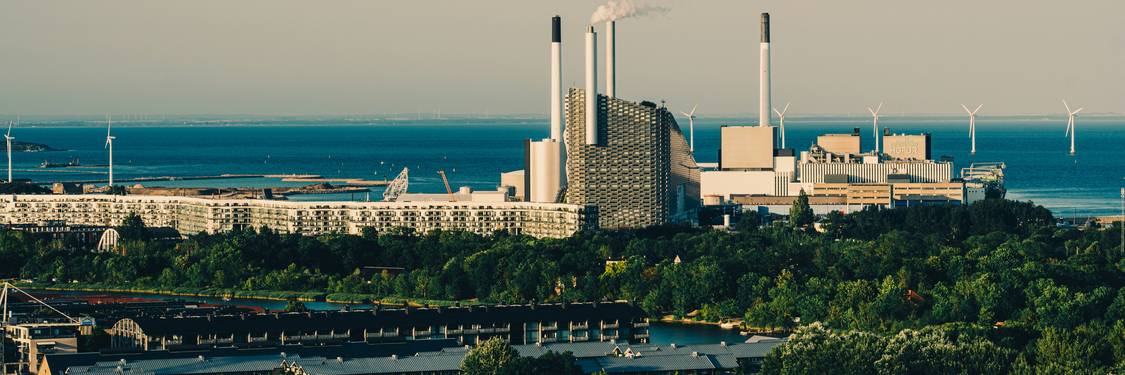Ontario Clean Tech & Green Business Tax Credits (2025 Guide)
Ontario is a Canadian leader in clean technology and green business innovation, offering a wide range of tax credits, grants, and incentives to help businesses advance sustainability, energy efficiency, and low-carbon solutions. Whether you’re a manufacturer installing solar panels, a startup developing green tech, or an SME retrofitting for efficiency, Ontario’s clean tech credits are designed to reduce your tax bill and fuel your growth. This guide covers every major provincial program, eligibility rules, step-by-step claims, calculation examples, documentation, audit risk, and how to stack with federal incentives for maximum benefit.

1. Overview of Major Ontario Clean/Green Tech Credits
- Ontario Innovation Tax Credit (OITC): Refundable credit for corporations carrying out eligible R&D in Ontario – including clean tech, manufacturing process innovation, software, and green technology development. Covers 8% of qualifying expenditures.
- Ontario Business Research Institute Tax Credit (OBRITC): 20% refundable credit for eligible R&D conducted in partnership with Ontario research institutes, universities, or hospitals—often used for advanced clean tech research.
- Ontario Green Energy Equipment Deductions: Enhanced Capital Cost Allowance (CCA) for investments in solar, wind, battery storage, high-efficiency HVAC, and other renewable/clean tech equipment. Deduct up to 100% in year one for qualified classes (43.1/43.2).
- Ontario Research and Development Tax Credit (ORDTC): Non-refundable credit (3.5%) for qualifying R&D expenditures, stackable with OITC and federal SR&ED.
- Targeted Green/Innovation Grants: Ontario periodically offers competitive grants for energy efficiency upgrades, clean manufacturing, retrofits, and green tech pilot projects (e.g., Save on Energy, SDTC, Ontario Advanced Manufacturing Innovation Competitiveness Stream).
2. Eligibility Requirements
- Eligible Businesses: Ontario-registered corporations, manufacturers, processors, green tech companies, innovation startups, and SMEs (sole proprietors/partnerships may not qualify for all credits).
- Qualifying Activities: R&D projects, clean technology development, energy efficiency upgrades, renewable energy installations (solar, wind, batteries), process improvement, and retrofits.
- Residency Requirements: Must perform work and/or install equipment at Ontario facilities. Employees performing R&D must work in Ontario.
- Exclusions: Routine repairs/maintenance, projects outside Ontario, non-business activities, and expenditures already 100% covered by grants may not qualify.
3. How to Apply / Claim Process
- OITC, ORDTC, OBRITC: Claim on your Ontario corporate tax return (T2) using Schedules 566 (OITC), 508 (ORDTC), and 568 (OBRITC). Must also file federal SR&ED form T661 if claiming R&D credits. Supporting technical reports, payroll records, and invoices required.
- Green Equipment Deductions: Identify and track eligible assets (solar, wind, batteries, etc.)—claim enhanced CCA on federal/provincial return (see CRA’s CCA classes 43.1/43.2 for details). Invoices, proof of installation, and technical specs needed.
- Targeted Grants: Apply online or via Ontario agency before starting project. Submit business plan, project details, technical specs, and budget. Await pre-approval before incurring costs.
4. Credit Amounts & Calculation Examples
- Ontario Innovation Tax Credit (OITC): 8% of qualifying R&D expenses (payroll, materials, overhead).
Example: $250,000 eligible R&D = $20,000 refundable OITC. - Ontario Business Research Institute Tax Credit (OBRITC): 20% of eligible R&D with Ontario research partners.
Example: $120,000 eligible = $24,000 refund. - ORDTC: 3.5% of qualifying R&D (may be claimed in addition to OITC).
Example: $250,000 R&D = $8,750 ORDTC (non-refundable, use to reduce ON tax). - Green Equipment Deductions: 100% write-off in year 1 for eligible CCA classes.
Example: $180,000 in solar panels = $180,000 deduction, reducing taxable income. - Stacking Example: A manufacturer spends $500,000 on green R&D and $200,000 on solar. They claim $40,000 OITC, $17,500 ORDTC, $200,000 CCA deduction, and stack with federal SR&ED (see below).
5. Stacking Ontario Credits with Federal Clean Tech Incentives
Ontario’s clean tech credits are designed to work alongside federal incentives, letting you “stack” multiple programs for bigger refunds. Most provincial credits require you to reduce eligible expenses by any grant/subsidy received, but stacking is permitted between federal and Ontario R&D, innovation, and green equipment credits.
- Federal SR&ED: 15%–35% refundable/non-refundable credit for eligible R&D—can be claimed alongside OITC/OBRITC/ORDTC.
- Clean Technology Investment Tax Credit (ITC): 30% refundable federal credit for investments in eligible clean tech (solar, wind, battery, etc.), stackable with ON CCA and grants.
- Best Practice: Claim grants/rebates first, then reduce eligible expenses for tax credits. Coordinate with a tax specialist for complex stacking cases.
- Example: SME invests $200,000 in solar. Gets $30,000 Save on Energy rebate, $51,000 federal ITC (30% of $170k), claims $170,000 ON CCA, and may reduce ON income for further tax savings.
6. Documentation, Audit Risk & Best Practices
- What to Keep: Invoices, proof of payment, contracts, payroll records, technical reports, R&D logs, equipment specs, project plans, correspondence with government.
- Common Errors: Claiming ineligible costs, missing documentation, double-claiming (not netting out grants), calculation errors, or using outdated forms.
- Audit Risks: Incomplete records, unusually high claims, vague projects, or mismatched payroll/expense reports can trigger reviews.
- Best Practices: Keep a 7-year file, update records promptly, and respond quickly to audit queries. Consider professional review for large/complex claims.

7. Practical Scenarios: Ontario Clean Tech Credits in Action
ABC Corp spends $250,000 on rooftop solar. Receives $25,000 Save on Energy rebate. Claims $225,000 for federal Clean Tech ITC (30% = $67,500), writes off $225,000 via CCA, and reduces Ontario tax bill. Net after-tax/project cost drops by over 40%.
GreenSoft Inc. spends $120,000 on R&D (payroll, materials). Claims OITC ($9,600), ORDTC ($4,200), and federal SR&ED (up to $30,000). Refunds and credits fund further product development.
Eco-Logistics Ltd. upgrades lighting and HVAC ($80,000), gets $12,000 rebate, claims $68,000 CCA deduction, and reduces ON/federal tax liability. Applies for additional small business green grants.
8. Frequently Asked Questions: Ontario Clean Tech Credits
9. Official Resources & Internal Links: Ontario Clean Tech Business Credits
- Ontario Innovation Tax Credit (OITC) – Official Site
- Business Research Institute Tax Credit (OBRITC) – Official Site
- Ontario Research and Development Tax Credit (ORDTC) – Official Site
- Save on Energy Ontario – Rebates/Grants for Businesses
- CRA Accelerated Capital Cost Allowance (CCA)
Internal Resources & Related Ontario/Canada Guides
- Ontario Business Tax Breaks Directory – All Ontario business credits, including green, innovation, and sectoral incentives.
- Ontario Green Tech Credits (Detailed) – In-depth green tech credit guide.
- Ontario Innovation Tax Credits – How to claim OITC/OBRITC/ORDTC.
- Other Ontario Business Credits & Deductions – Additional ON business incentives.
- Canada-Wide Green Tech Credits – Federal and cross-provincial clean tech incentives.